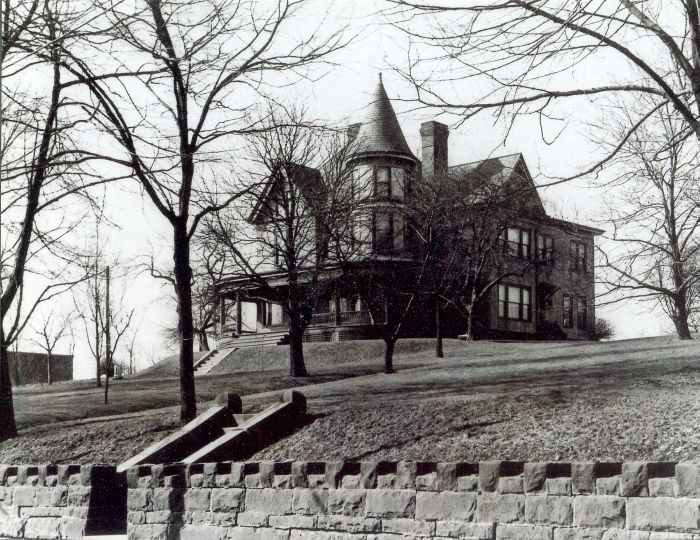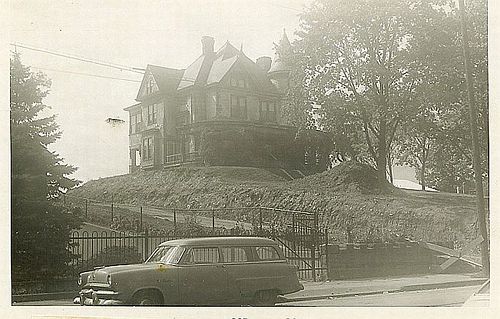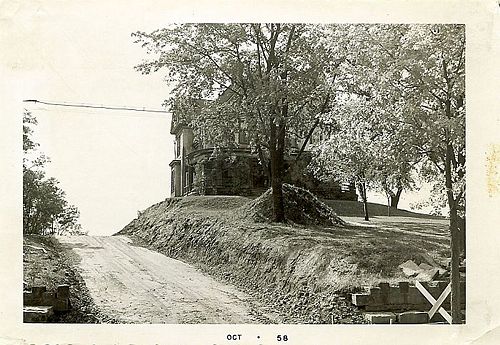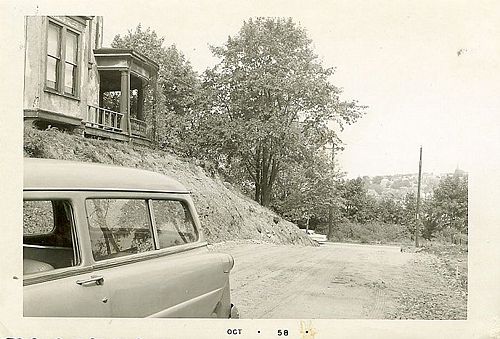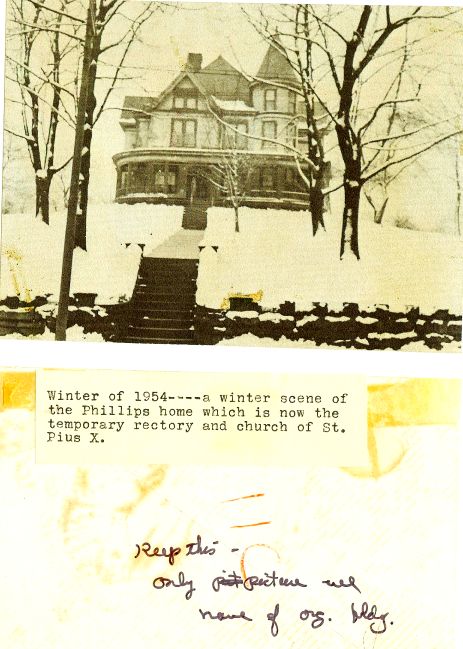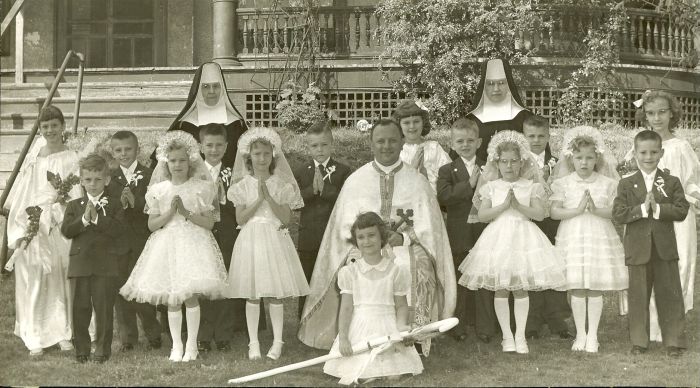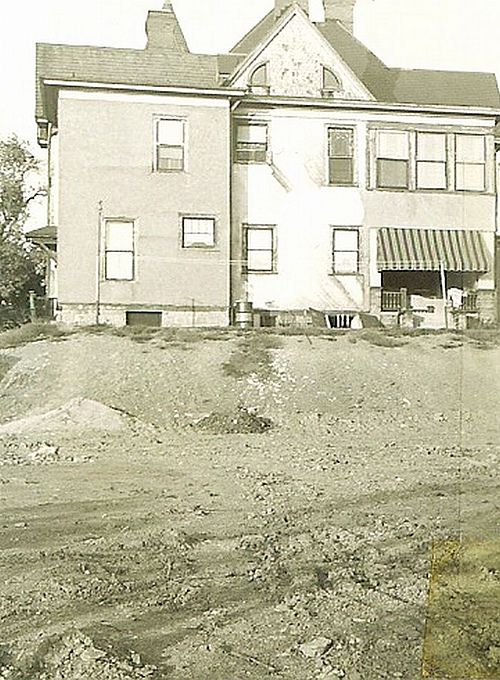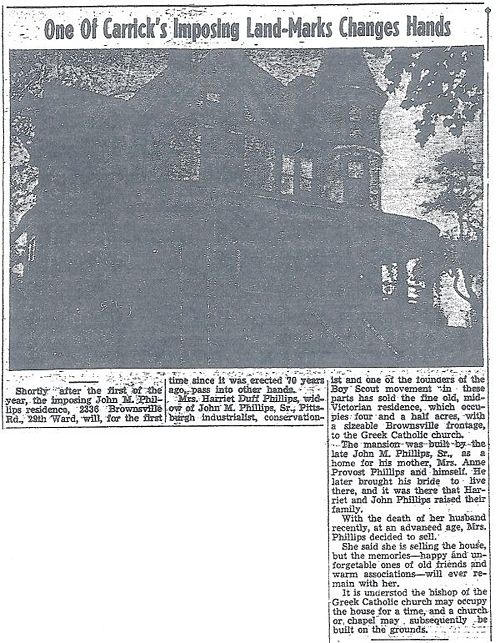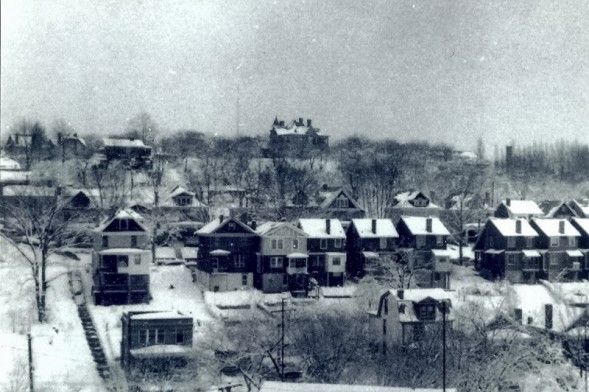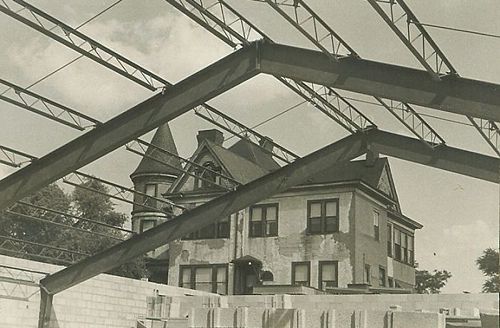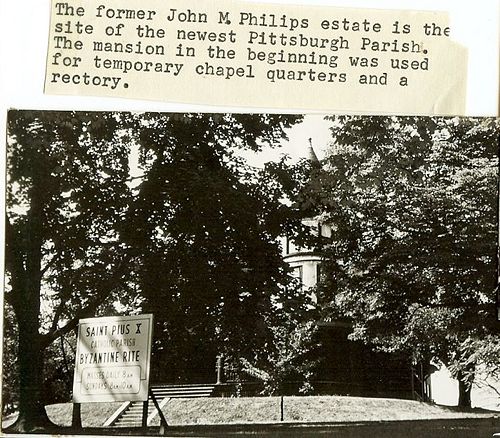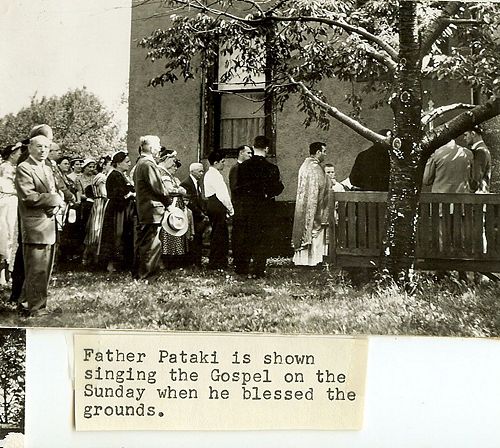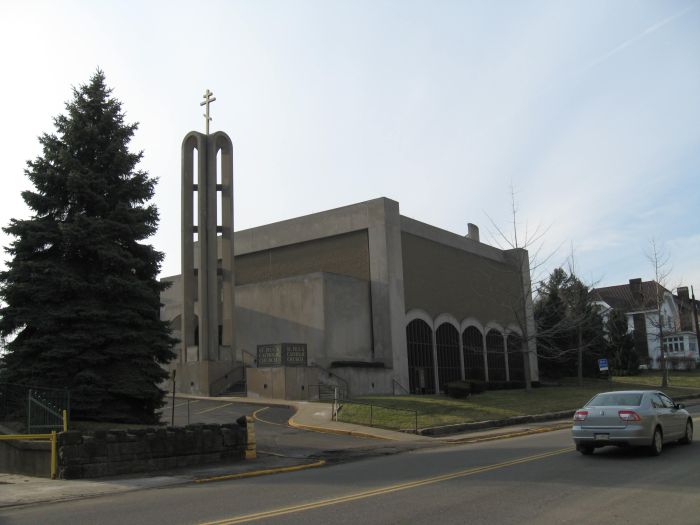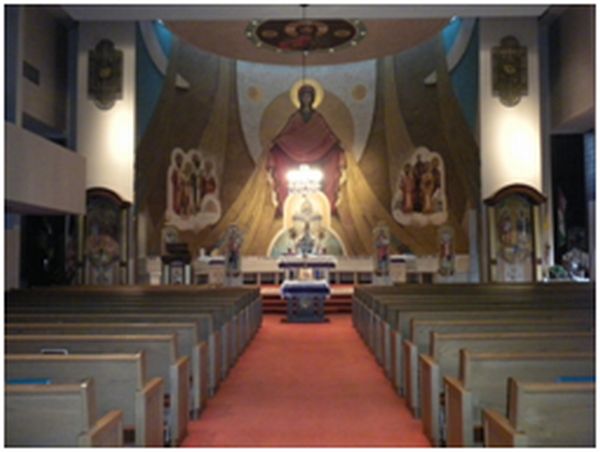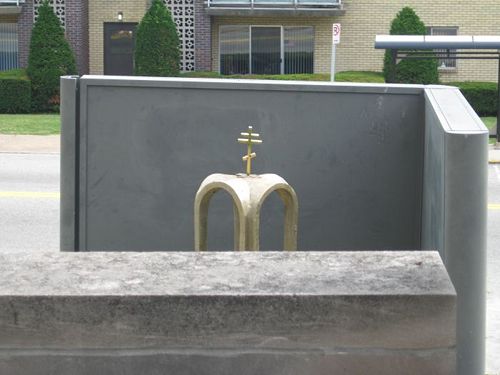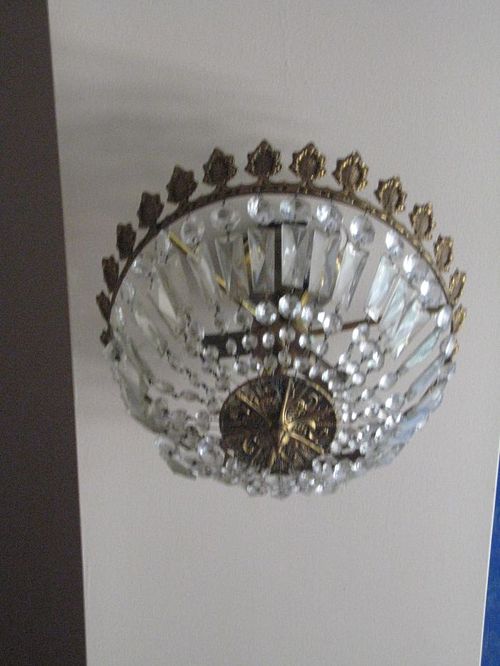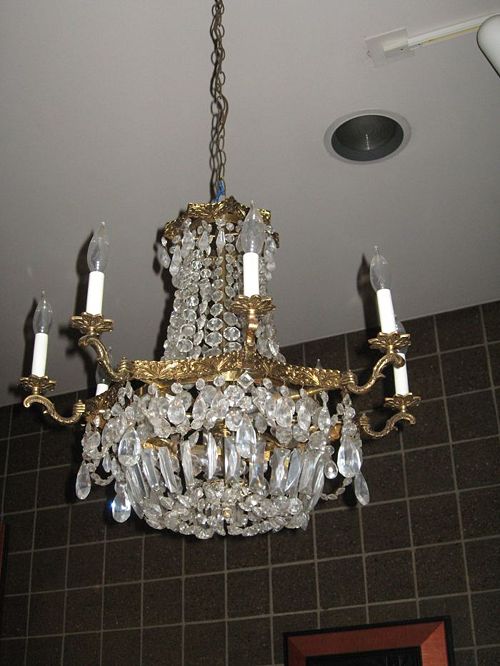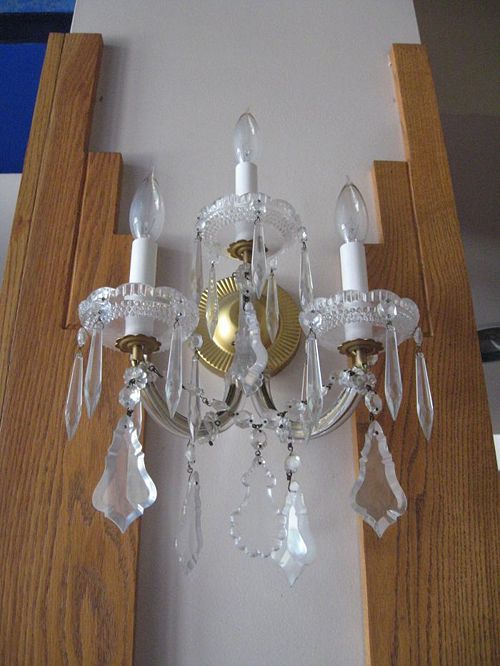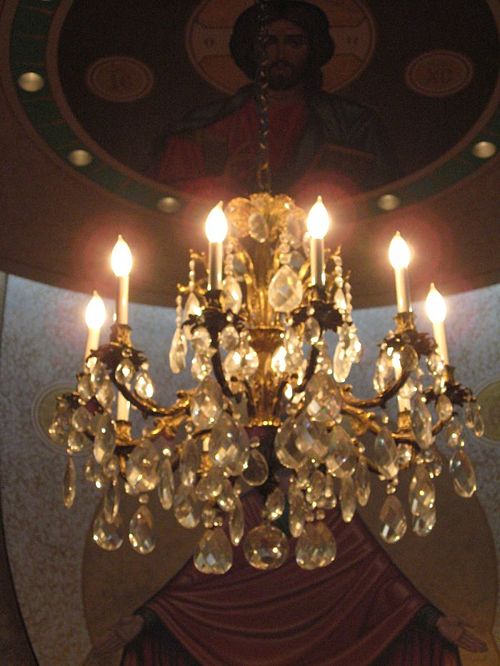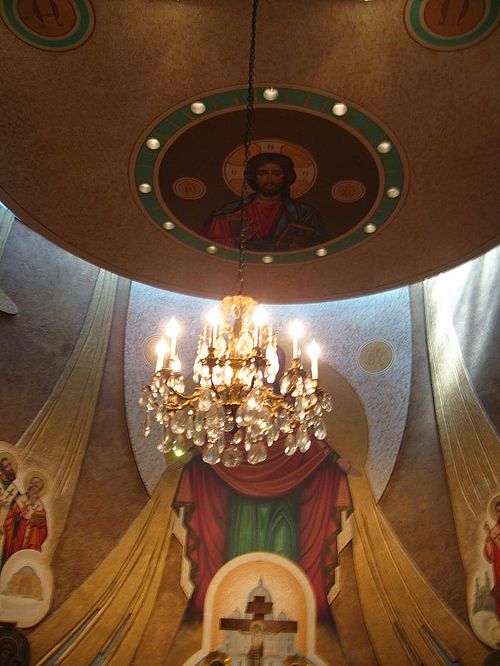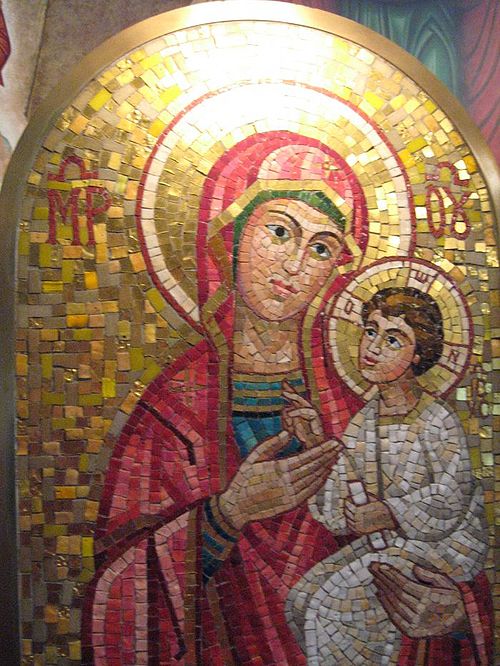Difference between revisions of "St. Pius X Byzantine Catholic Church"
(→These photos are of the interior of the church. Several chandeliers are said to be of the Impton Mansion.) |
|||
| (6 intermediate revisions by the same user not shown) | |||
| Line 1: | Line 1: | ||
== Several of the following photos are courtesy of the good people at St. Pius X Catholic Church built on the site of [[Impton]]. The property was purchased from the Phillips Family for $75,000. == | == Several of the following photos are courtesy of the good people at St. Pius X Catholic Church built on the site of [[Impton]]. The property was purchased from the Phillips Family for $75,000. == | ||
| − | Before the church was built this mansion called "Impton" was on the property. It belonged to [[John M. Phillips]] and [[Harriet Duff Phillips]]. | + | |
| + | == Before the church was built this mansion called "Impton" was on the property. It belonged to [[John M. Phillips]] and [[Harriet Duff Phillips]]. == | ||
[[Image:Impton best resized.jpg]] | [[Image:Impton best resized.jpg]] | ||
| Line 7: | Line 8: | ||
[[Image:Impton winter.jpg]] | [[Image:Impton winter.jpg]] | ||
| − | [[Image:Impton 5.jpg]] | + | [[Image:Impton 5.jpg|500px]] [[Image:Impton 6.jpg|500px]] |
| − | [[Image:Impton | + | [[Image:Impton 7.jpg|500px]] |
| − | + | [[Image:Impton winter with description.jpg|500px]] | |
| − | + | ||
| − | [[Image:Impton winter with description.jpg]] | + | |
== The mansion was used as the church while the hall was being constructed. == | == The mansion was used as the church while the hall was being constructed. == | ||
| Line 22: | Line 21: | ||
== This is the side view of the home during the priliminary construction of the hall. == | == This is the side view of the home during the priliminary construction of the hall. == | ||
| − | [[Image:Impton side view during construction.jpg]] | + | [[Image:Impton side view during construction.jpg|500px]] [[Image:John M. Phillips Mansion Impton article.jpg|500px]] |
| + | [[Image:Impton Rear.jpg]] | ||
| − | + | == Photo courtesy of Julia Tomasic == | |
| − | [[Image:Impton | + | [[Image:Impton 4.jpg|500px]] |
| − | + | ||
| + | [[Image:Impton 2.jpg|500px]] [[Image:Impton 3.jpg|500px]] | ||
| + | |||
| + | |||
| + | [[File:St. Pius 2008.jpg]] | ||
| + | |||
| + | [[File:St. pius booklet photo.jpg]] | ||
| + | |||
| + | ''' St. Pius X Byzantine Catholic Church ''' | ||
| + | |||
| + | 2336 Brownsville Road | ||
| + | Pittsburgh, PA 15210 | ||
| + | Telephone: 412-881-8344 | ||
| + | Liturgies are conducted by | ||
| + | Pastor, Msgr. Russell A. Duker | ||
| + | Saturdays at 5:30PM & Sundays at 8:30AM. | ||
| + | |||
| + | St. Pius X Byzantine Catholic Church was established June 1954 to serve the spiritual needs of Byzantine Catholics of the Pittsburgh Central South Hills areas. The existing church building was dedicated on May 19, 1974 which also commemorated the May 19, 1954 canonization of our parish’s patron saint, Saint Pius X. | ||
| + | Our Divine Liturgy was penned by Saint John Chrysostom, Archbishop of Constantinople in the 5th century. Today this same Liturgy is celebrated almost entirely in English. Both priest and congregation sing their participation. | ||
| + | |||
| + | Byzantine Catholic churches are all designed essentially in the same fashion. Below are some key facts and features: | ||
| + | |||
| + | ICONs. As you tour our church, our century’s old tradition of venerating icons is evident. The icons are not just art objects but rather scared objects which foster devotion and piety. The honor given to an icon is only veneration not adoration which is given to God only. Feeling closer to God and to things divine is the desired result of our veneration of icons. | ||
| + | The ceiling as your enter the church is painted with stars to depict “the heavens”. It reminds us that the entire Body of Christ, in heaven and earth, is coming together to worship. | ||
| + | |||
| + | Saints Cyril and Methodius. As you walk into the church, these “Saints of the Slavs” are holding a scroll of Saint Paul to the Ephesians from which our parish’s motto of “With Truth and Integrity” is derived. | ||
| + | |||
| + | Chapel of Remembrance & Shrines. This area situated to your right upon entry is dedicated to the Mother of Perpetual Help, our forefathers, founders and martyrs. Artifacts from the “old country” regions are displayed in the glass cases. | ||
| + | |||
| + | Most Holy Godbearer. The Protection of the Mother of God is depicted by the extremely large icon in back of the altar. It shows Mary’s arms extended with her protecting veil. Mary is our heavenly Mother interceding for us and our efforts to protect & defend human life from conception through natural death. We extol her as the Godbearer, the woman who actually gave flesh to the eternal Son of God. The Vatican, Rome is shown in front of Mary. As her icon directs us to the altar, Mary always directs us to Jesus. | ||
| + | |||
| + | King of the Universe. On the highest part of the ceiling above the altar, the icon of Christ as King of the Universe is shown along with the Greek letters of alpha and omega (beginning & end). Jesus rules throughout eternity! | ||
| + | |||
| + | Modern Day Martyrs. To the right of the Mary icon are the four holy Ruthenian bishops: Blessed Theodore George Romzha, Blessed Paul Peter Gojdich, Venerable Alexander Chira and Blessed Basil Hopko. During the recent period of communist persecution in Central and Eastern Europe, these four exemplary advocates intrepidly defended their Catholic convictions. They are relentless intercessors before the throne of Almighty God for all who struggle to remain faithful to the Lord Jesus and to His blessed Kingdom on earth – the Church. We continue to offer prayers for their eventual canonization as saints of the entire Holy Catholic Church. | ||
| + | |||
| + | Ancient Holy Hierarchs. To the left of Mary icon are the three holy Hierarchs: Basil the Great, Gregory the Theologian, John Chrysostom and Saint Athanasius. | ||
| + | The early church’s pride for these teachers lead to competition and church division. This was healed when Saint John Mauropus, the Metropolitan of Euchaïta dreamed and received instruction from all three Hierarchs as follows: “As you see, the three of us are with God and no discord or rivalry divides us. Each of us, according to the circumstances and according to the inspiration that he received from the Holy Spirit, wrote and taught what befits the salvation of mankind. There is not among us a first, a second or a third.” As a result, the feast of all three Hierarchs is celebrated on January 30. | ||
| + | Saint Athanasius (296-373) insisted that Arianism, the reigning "orthodoxy" of the day, was in fact a heresy. To Athanasius, the logic of New Testament doctrine of salvation assumed the dual nature of Christ. "Those who maintain 'There was a time when the Son was not' rob God of his Word, like plunderers." | ||
| + | Emperor Constantine the Great called a council of bishops at Nicea to end the dispute and eventually fleshed out an early version of the Nicene Creed. The council condemned Arius as a heretic, exiled him, and made it a capital offense to possess his writings. Athanasius, whose treatise On the Incarnation laid the foundation for the orthodox party at Nicea, was hailed as "the noble champion of Christ." | ||
| + | |||
| + | Iconostasis [Greek: “eikon”-image; “stasis”-stand, support] separates the sanctuary from the nave of the church. Here at St. Pius, our iconostasis is a “work in progress”. We have yet to purchase its doors. The four icons screens are set up in the traditional manner and are the same in all Byzantine churches: | ||
| + | |||
| + | To the right: Christ the Teacher and the parish’s patron saint, St. Pius X. | ||
| + | To the left,: Blessed Mother holding the infant Jesus and St. Nicholas, the patron saint of the Byzantine Catholic Church. | ||
| + | |||
| + | Apostles of the Slavs. Our Ruthenian ancestors were converted in the 2nd half of the 9th century by SS Cyril and Methodius. (icon on the far right) In 1981, Pope John Paul II proclaimed SS Cyril and Methodius Co-Patrons of Europe, to link their missionary and cultural work to that of St. Benedict. | ||
| + | |||
| + | Founders of Russian Christianity. Large icon on left front is Olga & Vladimir. Olga born in about 890, was the wife of Prince Igor of Russia, and after his death in 945 she was regent for their son. In 957 she visited Constantinople and, either then or earlier, became a Christian. She did not succeed in converting her son, or a significant number of their countrymen. She died in 969. Olga’s grandson Vladimir appeared to convert to Christianity for purposes of a political marriage. He married Anna the sister of the Byzantine emperor Basil II. However, Vladimir took his Christian commitment seriously. He removed himself from his former pagan wives/mistresses, destroyed idols & pagan temples, built churches, monasteries and schools, brought in Greek missionaries to educate his people, abolished or greatly restricted capital punishment, and gave lavish alms to the poor. | ||
| + | |||
| + | |||
| + | |||
| + | |||
| + | == This is on the very top of the steps leading to the doors of the church. == | ||
| + | |||
| + | [[Image:St. Pius 1.jpg|500px]] | ||
| + | |||
| + | == These photos are of the interior of the church. Several chandeliers are said to be of the Impton Mansion. == | ||
| − | [[Image: | + | [[Image:St. Pius Chandelier.jpg|500px]] [[Image:St. Pius Chandelier 3.jpg|500px]] |
| − | [[Image: | + | [[Image:St. Pius Chandelier 5.jpg|500px]] [[Image:St. Pius Chandelier 8.jpg|500px]] |
| − | [[Image: | + | [[Image:St. Pius 2.jpg|500px]] [[Image:St. Pius 4.jpg|500px]] |
| + | [[File:St. pius icon.jpg|500px]] [[File:St. pius icon 2.jpg|500px]] | ||
== All that remains of the [[Impton]] mansion is part of the original wall on both sides of the driveways and a few stones forming the wall infront of the church. == | == All that remains of the [[Impton]] mansion is part of the original wall on both sides of the driveways and a few stones forming the wall infront of the church. == | ||
[[Image:John m phillips impton 2008.jpg]] | [[Image:John m phillips impton 2008.jpg]] | ||
Latest revision as of 18:07, 26 December 2011
Contents
- 1 Several of the following photos are courtesy of the good people at St. Pius X Catholic Church built on the site of Impton. The property was purchased from the Phillips Family for $75,000.
- 2 Before the church was built this mansion called "Impton" was on the property. It belonged to John M. Phillips and Harriet Duff Phillips.
- 3 The mansion was used as the church while the hall was being constructed.
- 4 This is the side view of the home during the priliminary construction of the hall.
- 5 Photo courtesy of Julia Tomasic
- 6 This is on the very top of the steps leading to the doors of the church.
- 7 These photos are of the interior of the church. Several chandeliers are said to be of the Impton Mansion.
- 8 All that remains of the Impton mansion is part of the original wall on both sides of the driveways and a few stones forming the wall infront of the church.
Several of the following photos are courtesy of the good people at St. Pius X Catholic Church built on the site of Impton. The property was purchased from the Phillips Family for $75,000.
Before the church was built this mansion called "Impton" was on the property. It belonged to John M. Phillips and Harriet Duff Phillips.
The mansion was used as the church while the hall was being constructed.
This is the side view of the home during the priliminary construction of the hall.
Photo courtesy of Julia Tomasic
St. Pius X Byzantine Catholic Church
2336 Brownsville Road Pittsburgh, PA 15210 Telephone: 412-881-8344 Liturgies are conducted by Pastor, Msgr. Russell A. Duker Saturdays at 5:30PM & Sundays at 8:30AM.
St. Pius X Byzantine Catholic Church was established June 1954 to serve the spiritual needs of Byzantine Catholics of the Pittsburgh Central South Hills areas. The existing church building was dedicated on May 19, 1974 which also commemorated the May 19, 1954 canonization of our parish’s patron saint, Saint Pius X. Our Divine Liturgy was penned by Saint John Chrysostom, Archbishop of Constantinople in the 5th century. Today this same Liturgy is celebrated almost entirely in English. Both priest and congregation sing their participation.
Byzantine Catholic churches are all designed essentially in the same fashion. Below are some key facts and features:
ICONs. As you tour our church, our century’s old tradition of venerating icons is evident. The icons are not just art objects but rather scared objects which foster devotion and piety. The honor given to an icon is only veneration not adoration which is given to God only. Feeling closer to God and to things divine is the desired result of our veneration of icons. The ceiling as your enter the church is painted with stars to depict “the heavens”. It reminds us that the entire Body of Christ, in heaven and earth, is coming together to worship.
Saints Cyril and Methodius. As you walk into the church, these “Saints of the Slavs” are holding a scroll of Saint Paul to the Ephesians from which our parish’s motto of “With Truth and Integrity” is derived.
Chapel of Remembrance & Shrines. This area situated to your right upon entry is dedicated to the Mother of Perpetual Help, our forefathers, founders and martyrs. Artifacts from the “old country” regions are displayed in the glass cases.
Most Holy Godbearer. The Protection of the Mother of God is depicted by the extremely large icon in back of the altar. It shows Mary’s arms extended with her protecting veil. Mary is our heavenly Mother interceding for us and our efforts to protect & defend human life from conception through natural death. We extol her as the Godbearer, the woman who actually gave flesh to the eternal Son of God. The Vatican, Rome is shown in front of Mary. As her icon directs us to the altar, Mary always directs us to Jesus.
King of the Universe. On the highest part of the ceiling above the altar, the icon of Christ as King of the Universe is shown along with the Greek letters of alpha and omega (beginning & end). Jesus rules throughout eternity!
Modern Day Martyrs. To the right of the Mary icon are the four holy Ruthenian bishops: Blessed Theodore George Romzha, Blessed Paul Peter Gojdich, Venerable Alexander Chira and Blessed Basil Hopko. During the recent period of communist persecution in Central and Eastern Europe, these four exemplary advocates intrepidly defended their Catholic convictions. They are relentless intercessors before the throne of Almighty God for all who struggle to remain faithful to the Lord Jesus and to His blessed Kingdom on earth – the Church. We continue to offer prayers for their eventual canonization as saints of the entire Holy Catholic Church.
Ancient Holy Hierarchs. To the left of Mary icon are the three holy Hierarchs: Basil the Great, Gregory the Theologian, John Chrysostom and Saint Athanasius. The early church’s pride for these teachers lead to competition and church division. This was healed when Saint John Mauropus, the Metropolitan of Euchaïta dreamed and received instruction from all three Hierarchs as follows: “As you see, the three of us are with God and no discord or rivalry divides us. Each of us, according to the circumstances and according to the inspiration that he received from the Holy Spirit, wrote and taught what befits the salvation of mankind. There is not among us a first, a second or a third.” As a result, the feast of all three Hierarchs is celebrated on January 30. Saint Athanasius (296-373) insisted that Arianism, the reigning "orthodoxy" of the day, was in fact a heresy. To Athanasius, the logic of New Testament doctrine of salvation assumed the dual nature of Christ. "Those who maintain 'There was a time when the Son was not' rob God of his Word, like plunderers." Emperor Constantine the Great called a council of bishops at Nicea to end the dispute and eventually fleshed out an early version of the Nicene Creed. The council condemned Arius as a heretic, exiled him, and made it a capital offense to possess his writings. Athanasius, whose treatise On the Incarnation laid the foundation for the orthodox party at Nicea, was hailed as "the noble champion of Christ."
Iconostasis [Greek: “eikon”-image; “stasis”-stand, support] separates the sanctuary from the nave of the church. Here at St. Pius, our iconostasis is a “work in progress”. We have yet to purchase its doors. The four icons screens are set up in the traditional manner and are the same in all Byzantine churches:
To the right: Christ the Teacher and the parish’s patron saint, St. Pius X. To the left,: Blessed Mother holding the infant Jesus and St. Nicholas, the patron saint of the Byzantine Catholic Church.
Apostles of the Slavs. Our Ruthenian ancestors were converted in the 2nd half of the 9th century by SS Cyril and Methodius. (icon on the far right) In 1981, Pope John Paul II proclaimed SS Cyril and Methodius Co-Patrons of Europe, to link their missionary and cultural work to that of St. Benedict.
Founders of Russian Christianity. Large icon on left front is Olga & Vladimir. Olga born in about 890, was the wife of Prince Igor of Russia, and after his death in 945 she was regent for their son. In 957 she visited Constantinople and, either then or earlier, became a Christian. She did not succeed in converting her son, or a significant number of their countrymen. She died in 969. Olga’s grandson Vladimir appeared to convert to Christianity for purposes of a political marriage. He married Anna the sister of the Byzantine emperor Basil II. However, Vladimir took his Christian commitment seriously. He removed himself from his former pagan wives/mistresses, destroyed idols & pagan temples, built churches, monasteries and schools, brought in Greek missionaries to educate his people, abolished or greatly restricted capital punishment, and gave lavish alms to the poor.
